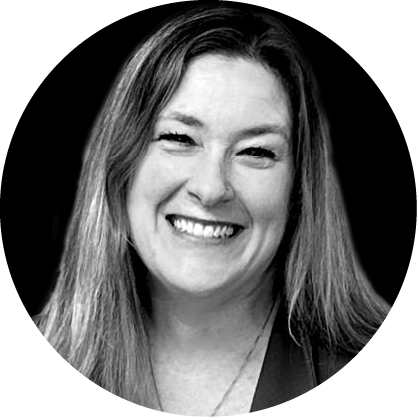



About

IN EVERY ISSUE
1.
PRESIDENT'S MESSAGE
From Intel to Impact: Why Insight Fuels Connection

2.
Publisher’s Message
Lighting the Path with Insight

3.
FROM THE EDITOR
Insight - Gather, Filter, and Inform

Calendar of Events
4.

FEATURES
5.
From Loyalty to Leadership: How Voice of the Customer Research Elevates Strategy

6.
Becoming a Market-Connected Marketer: The Importance of Being All-In

7.
A Minimalist's Approach to Knowledge Management

8.
The Cross-Industry Playbook for Better A/E/C Marketing

9.
Reading the Signals: Early Insights from a Changing A/E/C Landscape

How Emerging Trends Help A/E/C Marketers Decide What’s Worth Betting On
In an environment shaped by disruption, including shifting client expectations, rapid technology adoption, economic uncertainty, and generational turnover, risk is no longer something A/E/C firms can sidestep. Risk must be anticipated, assessed, and applied with intent.
For A/E/C marketers and business developers, this shift to address risk directly brings both pressure and opportunity. We must ask and answer more difficult, forward-looking questions:

Where are we avoiding risk, but should be engaging with it instead? Where are we exposed to more risk than we realize? Where are we taking the right risk with the right insight behind it?
Two recent SMPS Foundation research initiatives, developed in partnership with FMI Consulting and Client Savvy, a ClearlyRated Company, and revealed at Amplify A|E|C 2025, highlight a key finding: the difference between stagnation and growth lies in how firms and individuals approach risk—not whether they avoid it, but how they leverage it.
This shift, from avoiding to embracing, requires a different mindset. Risk is no longer something to manage quietly or reactively. It’s a strategic lever, and marketers and business developers are in a position to help pull it with intent. This isn’t about chasing bold ideas for the sake of it. It’s about recognizing when uncertainty signals opportunity and having the insight and alignment to move with purpose.

Playing It Too Safe
In times of volatility, retreating to familiar strategies may feel safe. But in today’s A/E/C environment, doing what has always worked can be the riskiest move of all.
The SMPS Foundation’s Emerging Trends research, developed with research partner FMI Consulting, highlights a growing concern. Firms that continue to rely on traditional transactional approaches, such as waiting for the RFP, recycling boilerplate content, or using broad, generalist messaging, are increasingly being screened out before the pursuit even begins.
Selection is happening earlier, shaped by what clients see and hear well before formal procurement. As AI-driven evaluations become more common, sameness is no longer neutral. It becomes a reason to be eliminated. Much like a healthy investment portfolio, where balance, timing, and variety are key to reducing risk and driving returns, firms must diversify their positioning and engagement strategies. Differentiation is more critical than ever before. Similarly, firms leaning too heavily on legacy client relationships or repeat work from long-standing accounts find that these sources of revenue aren’t delivering the same returns they once did.
According to the Foundation’s recent Client Experience (CX) in the A/E/C Industry research, top-performing firms use client feedback to guide their strategy. Firms that do are 59% more likely to experience above-average growth. Yet, insight from clients remains one of the most underused sources of differentiation.
For marketers and BD professionals, the challenge isn’t just standing out in a proposal. It’s shaping perception and building value before the project is even on the radar.


What to watch for:
- Proposals that could describe any and every firm.
- Pursuits that start too late to influence client thinking.
- Messaging focused on capability instead of value.
- A shrinking pipeline overly dependent on legacy clients or aging relationships.

What to do instead:
- Position the firm around how it thinks, not just what it does, and why that matters.
- Provide pursuit teams with relevant and specific intelligence to inform client-centered narratives.
- Engage clients early through thought leadership, digital marketing, and social media content, along with BD conversations to listen and create value.
- Actively evaluate the strength of current BD relationships and diversify outreach to reflect where future opportunities are emerging.

Misreading the Market
Client expectations are accelerating. The shift is generational, behavioral, and increasingly digital. Firms that fail to keep pace risk more than missed opportunities. They risk strategic misalignment.
According to the Foundation’s Emerging Trends research, over half of the respondents expect major shifts in client behavior due to generational change. Nearly 40% of senior leaders in the A/E/C industry are expected to retire within the next five years, accelerating leadership transitions and reshaping how firms engage with clients. As Millennials and Gen Z step into decision-making roles, they’re bringing new expectations. They want purpose-driven partnerships and seamless digital experiences, along with more proactive value-aligned client engagement.
This audience responds differently. Traditional sales tactics carry less weight. They react to shared values and intuitive, self-guided interactions more than traditional BD tactics. Cold calls and static brochures often fall flat. Generic content signals a disconnect.
The Foundation’s CX research shows that top-performing firms are not guessing but are listening and responding. Those that use client surveys are 65% more likely to succeed, and firms that close the feedback loop are more likely to grow and remain profitable.
The greater risk goes beyond falling behind. The risk is becoming irrelevant to those now deciding who wins the contract.


What to watch for:
- Messaging focused on firm credentials, not client context
- Outdated or disjointed digital asset.
- Pursuits built on legacy relationships rather than broader engagement.

What to do instead:
- Position around purpose, not just performance.
- Use formats preferred by younger buyers, such as video, digital tools, and social content.
- Build client personas and journey maps that reflect how today’s buyers think and decide.

Overlooking the Gaps Within
While many firms focus on external risks like market shifts, client behavior, or economic factors, some of the most damaging risks are internal. They often begin with misalignment between strategy and structure.
The Emerging Trends research highlights a key shift. Marketing and business development teams are being asked to lead conversations about client experience, positioning, brand equity, and digital transformation. Yet, in many firms, internal infrastructure and the necessary integration have not caught up to those expectations.
Disconnected teams, outdated workflows, and limited visibility into client data slow progress. When marketing and BD professionals lack the resources and authority to contribute strategically, the firm misses opportunities. These issues may not be obvious at first, but over time they create a cycle of reactivity, weaken the firm’s message, and stretch teams beyond their capacity.
Firms rising to the moment are not always those with the biggest budgets. Instead, they align people, platforms, and processes around a clear growth strategy. The real risk isn’t just inefficiency. It’s falling out of step with the market, and that is much harder to fix.


What to watch for:
- Marketing and BD teams operating in silos or brought in too late.
- Minimal investment in CRM, automation, or analytics.
- Inconsistent client data collection and/or poor integration of data.
- Unclear ownership of brand, strategy, or positioning.

What to do instead:
- Reevaluate how marketing and BD teams are structured and resourced.
- Improve integration between growth and delivery teams, with support from leadership, especially around client knowledge.
- Invest in tools that support strategic planning and execution.
- Maintain consistent client data collection and integration across teams, systems, and outputs.


Treating Client Experience as a Soft Metric
Client experience (CX) is no longer optional. CX is a measurable driver of growth, profitability, and competitive advantage. Yet, many firms still treat it as something to improve when time allows, or only after a problem arises. That mindset carries significant risk.
Findings from the SMPS Foundation and research partner, Client Savvy, a ClearlyRated Company, show that firms leading in CX consistently outperform their peers. Higher performing firms are:
- 94% more likely to achieve above-average growth
- 113% more likely to achieve above-average profitability
- Twice as likely to attract and retain both talent and ideal clients
- 147% more likely to grow when they have a dedicated CX leader or team


What to watch for:
- Feedback that’s collected but not shared or acted on.
- Pursuit and delivery teams that don’t coordinate client engagement.
- Leaders who say CX matters but don’t model it.
- Misalignment between EX and CX.

What to do instead:
- Use client feedback to inform strategic planning, not just close out reviews.
- Assign clear ownership of CX across the firm.
- Provide training that connects daily work to client experience.
- Track and report CX outcomes regularly.
- Align CX efforts with EX strategies to ensure consistency

Underleveraging Marketing and Business Development
As client expectations evolve and competition intensifies, the role of marketing and business development is changing. The SMPS Foundation’s Emerging Trends research, along with input from affiliate organizations, reinforces that technical professionals in high-performing firms increasingly look to marketing and BD leaders for integrated strategy, client insight, and positioning support aligned with firmwide goals. These teams are no longer just building visibility or supporting pursuits, but helping shape strategy, guide positioning, and deliver measurable results.
Yet, many firms still treat marketing and BD as tactical or reactive functions. The result is the underuse of professionals who are often best positioned to sense shifts in client priorities and recognize when the firm’s approach is falling out of step with the market. This is a structural risk, not just a missed opportunity.
According to the Emerging Trends research, high-performing firms are investing in strategic growth roles, including CX leaders, marketing technologists, content strategists, and pursuit analysts. These roles are not overhead costs, but essential investments for raising brand value, competing, and securing revenue in a complex market.
Still, in many firms, old patterns persist. Marketing is brought in after go/no-go decisions. BD is expected to generate leads without coordinated client intelligence. Marketing and BD professionals are excluded from planning conversations, despite being closest to the client perspective.
When these teams are underleveraged, firms lose their ability to spot signals early, adapt quickly, and differentiate with clarity. Firms pulling ahead are not simply adding headcount. They focus on unlocking the full value of the growth talent they already have. These professionals do more than support growth; they drive it.


What to watch for:
- Marketing and BD teams excluded from firmwide planning.
- Disconnected systems, inconsistent messaging, or unclear brand ownership.
- Minimal investment in tools, training, or strategic leadership roles.

What to do instead:
- Involve marketing and BD in strategy conversations, not just shortlist interviews.
- Focus on outcomes such as positioning, pipeline strength, and client retention.
- Empower teams to meet modern client expectations with speed and relevance.
Turning Risk into Strategic Advantage
Across every challenge outlined here—positioning, alignment, market shifts, client experience, and organizational design—risk is a constant. The firms that will thrive are those that know how to interpret it, frame it, and take risks with purpose.
This is where marketing and business development professionals offer strategic value. Because they understand client dynamics and recognize early signs of change, these roles are uniquely positioned to help firms navigate uncertainty and make smarter, more deliberate growth decisions.
When used well, risk becomes a lever for aligning business strategy with market opportunity, resulting in more work, client continuity, and higher profitability. And the firms that learn to pull that lever with intention will be the ones shaping what comes next in the A/E/C industry.
About the SMPS Foundation
The SMPS Foundation is a not-for-profit 501(c)(3) organization established by the Society for Marketing Professional Services (SMPS) to deliver intelligence and insights for growth professionals and leaders. Its mission is to help the A/E/C industry navigate trends, change, and business evolution in a highly competitive marketplace through research, thought leadership, and strategic foresight. The SMPS Foundation is funded by donations and is underwritten by SMPS. Gifts by U.S. citizens may be tax-deductible for charitable purposes. To learn more, visit smpsfoundation.org.
The research referenced in this article can be accessed at smps.org/Foundation:

Emerging Trends in A/E/C Marketing and Business Development
Developed in collaboration with research partner FMI Consulting

CX in the A/E/C Industry
Developed in collaboration with research partner Client Savvy, a ClearlyRated Company

Donate Now: Whether it’s adding a little extra to your annual membership or making a planned multi-year gift, we invite you to help us create a lasting impact and continue delivering A/E/C Intelligence™. Support your Foundation today.
Fawn Radmanich, FSMPS, CPSM, is a Strategic Pursuit Leader for Stantec’s Water Strategic Pursuits Team with 25 years in the A/E/C industry. A Fellow of the Society for Marketing Professional Services and an SMPS Foundation Board Trustee, Fawn is a published author and speaker known for her forward-looking approach to leveraging innovation and strategy to drive success in an evolving marketplace.

Connect on Linkedin










